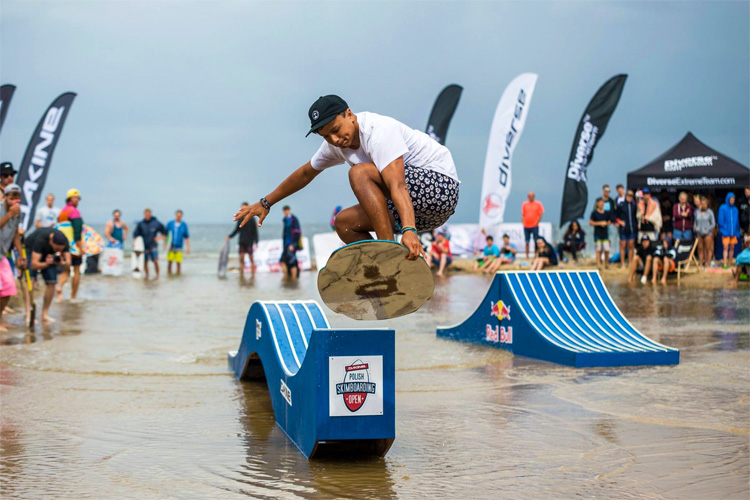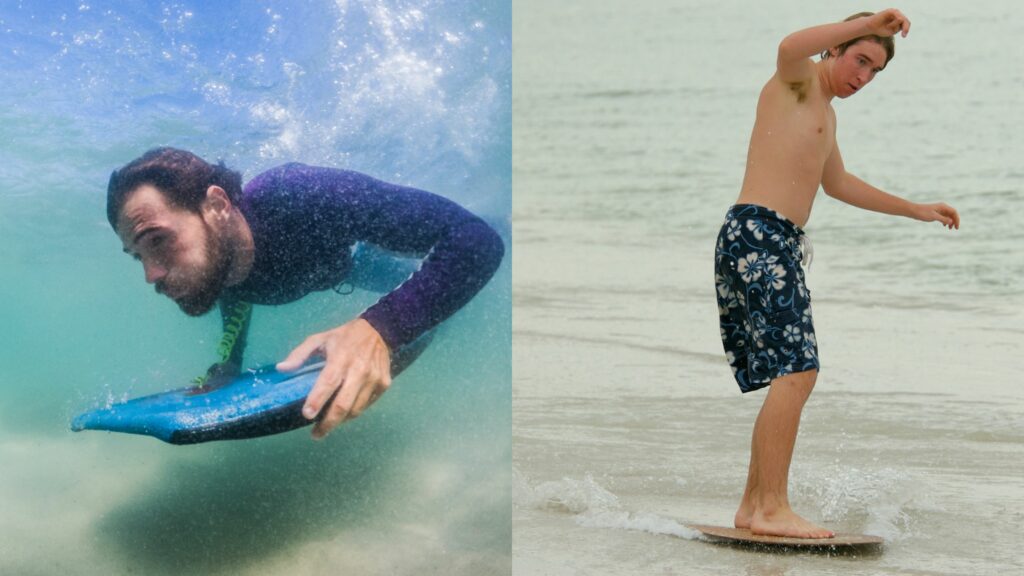Skimboarding – the sport of running into ocean waves on a short, flat board – has exploded in popularity over the past decade. But with the thrill of skimming across the water comes inevitable questions about the dangers. Is skimboarding actually a risky activity? The straightforward answer is yes, skimboarding does pose some hazards that every rider should be aware of. This article will break down the ways skimboarding can be dangerous, from neck and head injuries to encounters with sharks. We’ll also discuss precautions skimboarders can take to stay as safe as possible while still catching wicked waves. Although dangers exist, they can be mitigated with proper education, preparation and caution. By understanding the risks, skimboarders of all levels can continue to enjoy riding the waves while protecting their health. So let’s dive into the central question here – is skimboarding dangerous?
Understanding Skimboarding Dangers
Skimboarding entails riding waves to shore on a small, thin board. With the ocean’s volatility, skimboarding poses inherent injury risks – most often from falls, collisions or wipeouts in shallow water. Drowning threatens riders caught in rip currents or large swells. Broken bones, back trauma, dislocations and head wounds are common. Beginners face high accident rates learning techniques. But even experts risk slams crashing in heavy surf. Add in marine life encounters, and the sport carries substantial hazards that every enthusiast must respect.
Common Skimboarding Injuries
Here are some additional details on each of the common skimboarding injuries:
Foot and Ankle Injuries
- Fractures in the ankle or foot often require immobilization for 6-8 weeks. Surgery involves realigning bones with plates and screws. Physical therapy focuses on restoring range of motion and strength. Proper ankle support and balance help prevent these injuries.
Knee Injuries
- Torn ligaments like the ACL and PCL can end athletic seasons or careers. Surgery grafts a replacement ligament and is followed by months of rehab. Dislocated kneecaps stretch or tear quadriceps tendons requiring surgical repair. Fractured knee bones may heal slowly and limit mobility.
Spinal Injuries
- Vertebral fractures cause chronic back pain and increase future fracture risk. Herniated discs pressing on nerves cause weakness, numbness and reduced coordination. Severe spinal cord injuries can cause full or partial paralysis affecting all bodily functions.
Groin and Hip Injuries
- Hip dislocations cause severe trauma to the joint capsule, labrum cartilage, and surrounding muscles. Surgery is often needed along with precautions against avascular necrosis of the femoral head. Pulled groin muscles mean difficulty kicking the legs to maneuver the board.
Sand Rash, Cuts, and Abrasions
- Painful marine rash results from saltwater and sand irritation. Rinse well to prevent infection and apply antibiotic ointment. Cuts should be promptly cleaned and monitored for infection. Covering skin prevents abrasions that can become very painful.
Fungal Infections
- Fungal organisms enter via damaged skin causing redness, scaling, swelling, itching. Oral and topical antifungals treat these infections. Keep open wounds covered.
Surfer’s Ear
- Often requires removing impacted ear wax surgically. Ongoing prevention involves ear drops after surfing and avoiding inserting objects in the ears.
Sun Blindness
- Typically resolves in 24-48 hours. Wear wrapped sunglasses in bright light and avoid staring at reflected sunlight. Can cause permanent vision damage if repeated.
While no hobby is 100% risk-free, understanding these common skimboarding injuries helps riders be aware and take precautions.
Safety Measures and Injury Prevention
While skimboarding does pose injury risks, riders can take proactive steps to enhance safety and prevent accidents:
- Wear protective gear – Helmets, wrist guards, and padded shorts help mitigate impact from crashes. Avoid skimboarding barefoot to protect feet.
- Check conditions – Only skimboard in designated areas free of rocks, reefs or shallow water. Avoid large waves or strong rip currents.
- Stay hydrated – Dehydration and sun exposure increase accident risk. Drink fluids and reapply sunscreen regularly.
- Learn proper form – Taking lessons and mastering techniques like falling safely prevents injuries. Practice balance and board control.
- Know your limits – Attempting advanced maneuvers beyond your skill level increases crashes. Stick to basics until ready.
- Watch for others – Collisions happen, so be aware of other swimmers and boarders in the water.
- Have a spotter – A friend watching from shore can assist if you get hurt or struggle with currents.
- Inspect equipment – Damaged, warped boards are hazardous. Check for cracks or loose fins regularly.
- Listen to lifeguards – Obey all posted rules and advisories from lifeguards who understand the changing conditions.
With proper preparation, lessons, protective gear, and common sense, skimboarders can fulfill their need for speed while keeping the risks manageable. Respect the ocean, know your abilities, and put safety first above all else. By following these injury prevention tips, you can keep skimboarding an exciting sport that thrills without major harm.
How Hard is Skimboarding?
While easy initially, mastering skimboarding requires dedication through the learning curve. Yes, you just sprint out and try riding waves back. But finding flawless balance, positioning and wave reading demands substantial persistent practice beyond a year while accepting repeated crashes. Lessons greatly accelerate expertise. Without perseverance and grit, however, achieving reliable skimboarding proficiency remains improbable for most.
Final Thoughts
So there you have it – the lowdown on whether skimboarding deserves its dangerous reputation. As we’ve laid out here, shredding waves on a 3/4-inch piece of wood does up the chances of ending up injured. You’ve got the constant threat of wiping out at 20 mph into shallow water or packed sand. Not to mention run-ins with marine life that can take a bite or sting out of nowhere! So consider the facts, weigh the risks, but don’t miss out on an amazing way to spend days at the beach. Skimboarding remains a unique thrill that no other board sport can replicate. Just be smart, be safe, and you’ll join the ranks of stoked riders living their best life with boards in hand, eyes on the waves, and salt in their hair. Cowabunga dude!
I am Fornillos Bogs, a seasoned professional surfer and accomplished skimboarder originally from Tanauan, Leyte, Philippines. With a remarkable background in both sports, I have carved my niche in the aquatic world. Currently, I reside in Quezon City, Philippines, known for my exceptional skills on the waves and impressive performances in skimboarding competitions. My journey from the serene shores of Tanauan to the bustling city of Quezon City serves as an inspiring testament to my dedication and passion for riding the waves.


